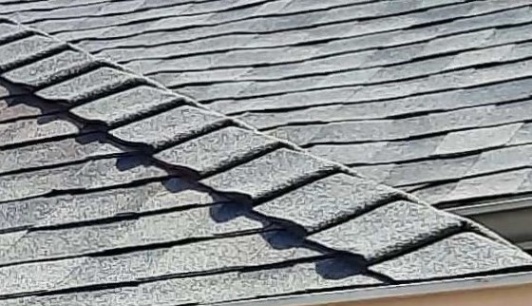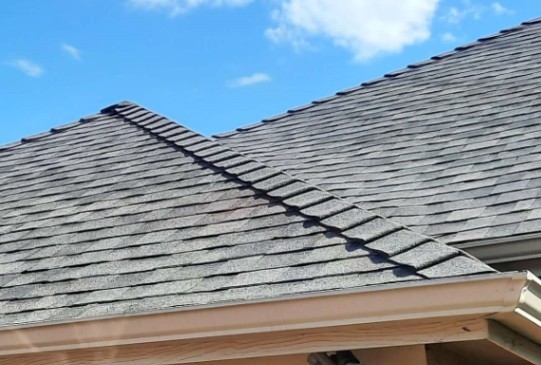
Dallas Roofer
Roofing in Dallas
Dallas Roofers
225-413-8928
Roofer Rockwall - Remove and Replace your Roofing
With 40 to 50-Year Rubberized Asbestos Shingles that are wind and hail resistant.
How are the rubberized asbestos shingles made?

How are the Rubberized Asbestos Shingles Made?
Rubberized asbestos shingles may be less standard today, but they were once a popular roofing material. These shingles are known for their durability and resistance to fire, making them an ideal choice for many homeowners. But exactly how are rubberized asbestos shingles made?
In this blog post, we'll take a closer look at the manufacturing process of these unique shingles and explore their benefits and drawbacks. So grab your craftmatic adjustable bed and get comfortable as we dive into rubberized asbestos shingle production!
What are Rubberized Asbestos Shingles?
Rubberized asbestos shingles, also known as asphalt shingles, were a popular roofing material in the early 20th century. They are made from asbestos fibers and natural or synthetic rubber. The combination of these materials creates a durable and long-lasting roofing product.
The manufacturing process begins with blending the raw materials
Rubberized asbestos shingles are a type of roofing material that was popularly used in the 20th century. They consist of a mixture of asphalt and asbestos fibers, giving them unique properties. The rubberized component of these shingles makes them more flexible than traditional asphalt shingles.
Asbestos is known for its durability and fire-resistant qualities, making it an ideal choice for roofing materials. However, this material has been largely phased out in modern construction due to health concerns related to exposure to asbestos fibers.
The production process for rubberized asbestos shingles involves mixing raw materials such as cement, asbestos fiber, and other additives like fillers or pigments. The mixture is then pressed into molds to create the desired shape and size of the shingle.
Once the mold has cooled down, the newly formed shingle is removed and coated with another layer of asphalt or similar sealant material on both sides. This coating helps protect against weathering effects like rainwater or snow accumulation while providing additional fire resistance properties.
Despite being less commonly used today than decades ago due to safety concerns surrounding asbestos exposure risks during installation or removal processes, some older homes may still have craftmatic rubberized asbestos shingles in place as part of their original roofs.
To create a uniform mixture. This mixture is then pressed into molds that shape it into individual shingles. Once the mold has been removed, the shingle is heated to cure the rubber, which allows it to bond firmly with the asbestos fibers.
One benefit of rubberized asbestos shingles is their resistance to fire. Asbestos is highly resistant to heat and flames, making it ideal for protecting homes from fires. Additionally, these shingles have excellent weathering characteristics, providing protection from harsh elements such as rain and wind.
However, one drawback of rubberized asbestos shingles is their potential health risks associated with exposure to airborne asbestos fibers during installation or removal. It's important for homeowners considering this type of roofing material to be aware of these risks before deciding to use them.
While they may not be commonly used today due to safety concerns surrounding asbestos exposure, rubberized shingles remain an exciting piece of history in building construction and continue to fascinate those interested in architecture and design.
More on the Making of Rubberized Asbestos Shingles
Rubberized asbestos shingles are a composite material made from a combination of rubber and asbestos fibers. Making these shingles starts with mixing raw materials, including powdered asbestos, natural or synthetic rubber, and other additives that improve product performance.
The mixture is then heated to a specific temperature in an autoclave under high pressure. This process creates cross-linkages between the rubber molecules and the asbestos fibers resulting in a highly durable and resilient material.
After cooling down, the sheets are cut into various shapes and sizes using specialized cutting machines. Then they undergo quality control tests to ensure they meet industry standards before being packaged for distribution.
It is important to note that while rubberized asbestos shingles were once commonly used as roofing materials due to their durability and fire resistance qualities, it has been discovered that prolonged exposure to airborne asbestos can lead to serious health problems such as mesothelioma. Asbestos has since been banned in many countries, including the United States.
The Benefits of Rubberized Asbestos Shingles
Rubberized asbestos shingles are a popular roofing material that offers numerous benefits to homeowners. These shingles can withstand harsh weather conditions, such as heavy rainfall and strong winds, making them ideal for use in unpredictable weather patterns.
One of the main advantages of rubberized asbestos shingles is their durability. They can last several decades without requiring any repairs or replacements, making them a cost-effective choice. These shingles also resist fire and pests like termites and rodents.
Another benefit of rubberized asbestos shingles is their energy efficiency. They help regulate the temperature inside the house by reflecting sunlight away from it during hot summers and retaining heat during cold winters. This leads to lower utility bills throughout the year.
Furthermore, rubberized asbestos shingles are eco-friendly since they are made using recycled materials. This makes them an excellent choice for those who want to reduce their carbon footprint while still maintaining a beautiful home exterior.
If you're looking for a durable, long-lasting roofing material that offers plenty of benefits regarding functionality and sustainability, rubberized asbestos shingles could be just what you need!
The Drawbacks of Rubberized Asbestos Shingles
While rubberized asbestos shingles may have some benefits, they also have several drawbacks that should be considered.
The production of these shingles can release harmful asbestos fibers into the air during manufacturing. Asbestos is a well-known carcinogen that can cause severe respiratory problems for workers exposed to it.
If installed incorrectly or damaged over time, rubberized asbestos shingles can release dangerous fibers into the air, posing a health risk to anyone nearby.
Removing and disposing of these shingles can be difficult and expensive due to their hazardous nature. During removal and disposal, special precautions must be taken to prevent further exposure to asbestos fibers.
While rubberized asbestos shingles were once considered durable and long-lasting alternatives to traditional roofing materials, they are now outdated options that have been replaced by safer alternatives such as metal roofing or composite materials.
While rubberized asbestos shingles may seem like an attractive choice initially due to their durability and fire resistance properties, the potential harm they pose far outweighs any benefits they may offer.
Conclusion
After exploring the process of making rubberized asbestos shingles and weighing their benefits against their drawbacks, it's clear that they have both positive and negative aspects. On the one hand, they are durable, fire-resistant, and a good option for those looking to maintain an older home with historical significance. However, on the other hand, they pose health risks due to asbestos fibers.
It's important to note that while rubberized asbestos shingles were once widespread in construction projects across America in the mid-twentieth century, safer alternatives are available today. Homeowners should be aware of potential hazards associated with building material choices.
Rubberized asbestos shingles were a popular roofing material due to their durability and fire-resistant qualities. However, their production has been discontinued due to health risks associated with asbestos exposure.
It is essential for homeowners who have rubberized asbestos shingles on their roofs to handle them with care and seek professional help if they need repairs or replacements. Asbestos fibers can be harmful when released into the air during DIY projects or renovations.
While alternative roofing materials available today offer similar benefits without health risks, it's essential to recognize the historical significance of rubberized asbestos shingles in building construction and appreciate how far we've come regarding safety standards and regulations.
Rubberized asbestos shingles were once a popular roofing material due to their durability and affordability. However, the health hazards associated with asbestos have led to its discontinuation in many countries.
If you come across rubberized asbestos shingles in your home or during renovations, handling them with caution and seeking professional assistance for removal is essential.
While craftmatic may not be directly related to rubberized asbestos shingles, it is essential to constantly research and understand the materials used in your home for safety purposes.
While rubberized asbestos shingles may have been innovative at one point in time for their unique combination of materials and durability factors when compared to conventional asphalt roof tiles but as we now know, their harmful effects on our health make them unsuitable for modern-day usage, especially as more eco-friendly options become increasingly available.